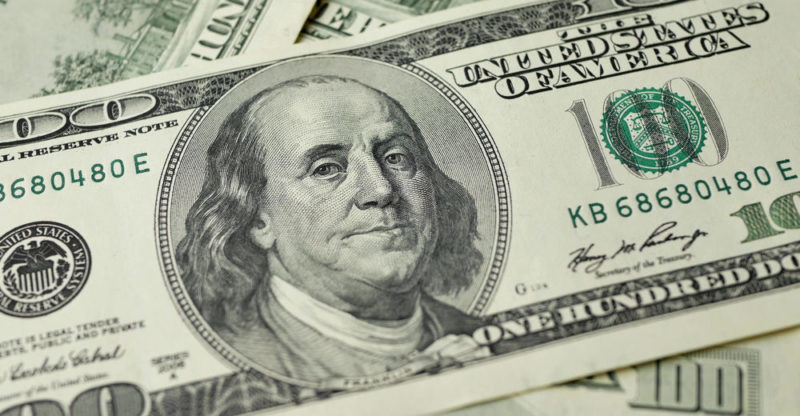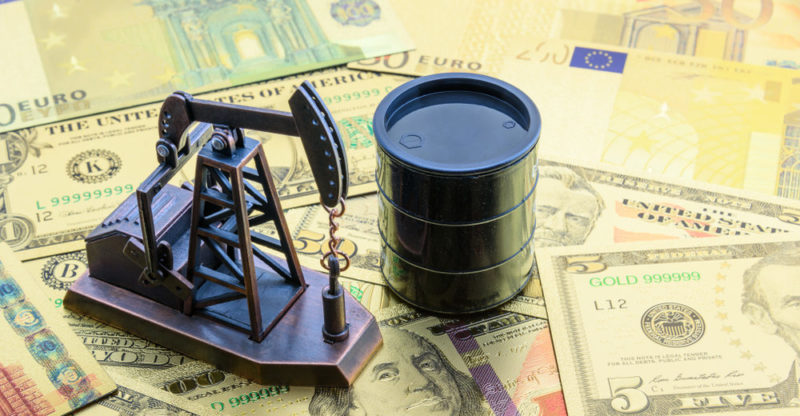We explain what devaluation is, what its causes and the consequences it presents. Also, its characteristics and examples.
What is Devaluation?
Devaluation is called the decrease in the nominal value of a currency or currency of a country , with respect to other foreign currencies, considered stronger and that serve as a reference value. It is also known as depreciation since the currency becomes cheaper in the international market .
Normally, devaluation is feared and it is considered a bad indicator in economic matters , since it reflects the loss of economic power of a nation compared to the rest of its international competitors.
However, devaluation is a financial procedure like any other , with causes and consequences and often part of an economic strategy, since no one is going to depreciate their currency unnecessarily. Devaluations are made official by the central banks of each country.
Origin of the term Devaluation
Devalue is a word made up of Latin words : the prefix “de-” (originally des- , which implies the opposite sense, as in des composing) and derivations of the noun “value” (such as to value, to evaluate), so it literally means “ lose value ”, that is, become cheaper.
Coin value

The currencies of the countries in foreign trade lack their own value : their value is purely relative and represents the confidence that one has in the productive and commercial capacities of the country that issues it.
The US dollar, for example, is one of the most widely used currencies for the exchange of goods in the entire world, so its demand is very high and its price is stable.
Causes of devaluation
A devaluation can be motivated by one or more of the following conditions:
- International currency valuation. Due to the laws of supply and demand, what is bought the most goes up in price and what nobody wants, gets cheaper. If a currency is in high demand (to save, for example, or for international business) it will rise in price compared to the others, while the currencies that no one wants to have depreciate.
- Currency flight. It occurs when the sums of wealth from one country are massively transferred to another, because its holders distrust the direction of the local economy . This also occurs when a massive payment default is suspected, which generates a bank run or flight of wealth from one currency to another, devaluing the former.
- Monetary issue. According to some commonly called monetarist theories, the issuance of banknotes without support by the central bank of a country to finance public spending, leads to an artificial liquidity that generates inflation (increase in prices) and the collapse of its real purchasing power, which which in international terms eventually leads to a devaluation.
Consequences of devaluation

A currency devaluation usually implies adverse effects for the economy and for the holders of the devalued currency, which can be:
- Inflation and rate increase. It is a consequence of the decrease in the purchasing power of the currency, since prices and rates lag behind the real value of transactions.
- Erosion of savings and wages. What before the devaluation represented an international net value (measurable in foreign currency), after it will have been significantly reduced, so that those who use the devalued currency become a little poorer.
- Debt liquefaction. Debts expressed in devalued currency also lose value, transferring wealth from creditors to debtors, unless there are indexation clauses in the debt contract.
- More competitive exports. The sale of local products becomes more profitable, as the local currency (in which the production processes are paid) is worth less compared to international markets (since the product is sold in foreign currency).
- Increase in tourism . If it is a tourist country, the devaluation lowers the costs of the average tourist and makes their visit more attractive since their savings in foreign currency can be exchanged for more local currency.
- It makes imported products more expensive. The currency is worth less compared to the international currency, importing becomes more expensive and that can feed the internal consumption of national products, whenever there is a wage increase.
Types of devaluation
 There are the following forms of currency devaluation:
There are the following forms of currency devaluation:
- Competitive devaluation. Two countries that compete (currency war) to position their currency above that of the other, favoring the balance of trade in their country.
- Internal devaluation. In search of an increase in competitiveness, an internal devaluation is based on a strategy of adjustment of income and wages and a reduction in the deficit.
- Tax devaluation. This is the name given to the reduction of fiscal rates (taxes) by a State that seeks to promote exports and lower local production costs.
Tequila effect
This was the name given to the economic crisis in Mexico in 1994 , whose repercussions were worldwide. It is also called in Mexico "The December error" and it occurred during the presidency of Ernesto Zedillo.It began with the lack of international reserves in this country, which drastically devalued the peso against the US dollar, leading to a wave of massive layoffs in Mexican companies that had debt in dollars and a massive flight of investors from the local market that quickly spread. for the Latin American continent, as many investors feared that it was a Latin American bloc decline .
Vodka effect
 The Russian financial crisis was known by this name and took place in 1998, when the ruble (the local currency) was devalued as a result of the Asian financial crisis of the previous year and the fall in the price of raw materials (natural gas, oil , metals and wood ) on which the Russian economy depended.
The Russian financial crisis was known by this name and took place in 1998, when the ruble (the local currency) was devalued as a result of the Asian financial crisis of the previous year and the fall in the price of raw materials (natural gas, oil , metals and wood ) on which the Russian economy depended.This crisis ended that same year but marked the beginning of the slowdown in the world economy .
Fixed exchange rate
When we speak of a fixed exchange rate , it refers to an exchange rate regime in which the value of the currency is adjusted according to that of another foreign currency that serves as a reference.This stabilizes the value of the local currency , facilitates trade and investment between the country whose currency serves as the reference and the one that applies the exchange regime, but prevents the latter from using monetary policies to achieve macroeconomic stability.
Revaluation
 Contrary to devaluation, revaluation implies an increase in the price of the local currency against the international market , under a fixed exchange rate. Under a floating rate regime, the term appreciation is preferred .
Contrary to devaluation, revaluation implies an increase in the price of the local currency against the international market , under a fixed exchange rate. Under a floating rate regime, the term appreciation is preferred .It is usually given deliberately , as an adjustment from a frame of reference that can be a foreign currency or the basket of currencies from around the world.
If the nominal value of the currency is altered without changing its exchange rate, it will be a currency conversion (equivalent to reinventing the currency) and not a revaluation.
Examples of devaluation
A very clear example of devaluation is the Venezuelan currency in the last decade , when its reference value against the dollar fell dramatically despite the exchange control system implemented for almost twenty years in the Caribbean country.Thus, the bolivar went from a (black) rate of Bs. 70 per dollar in 2014 , to Bs. 1,000 per dollar in 2016 and around Bs. 16,000 per dollar in 2017.
The above content published at Collaborative Research Group is for informational and educational purposes only and has been developed by referring reliable sources and recommendations from technology experts. We do not have any contact with official entities nor do we intend to replace the information that they emit.
Cultural journalist with great interest in education and technological innovation in the classroom. The future passes through technology and it is already here. .
Leave a reply
Your email address will not be published. Required fields are marked *Recent post

Sport: What Is It, Types, Risks, Features, Characteristics and Examples

Dogs: Emergence, Features, Characteristics, Feeding and Breeds

Story: Definition, Elements, Structure, Features and Characteristics

